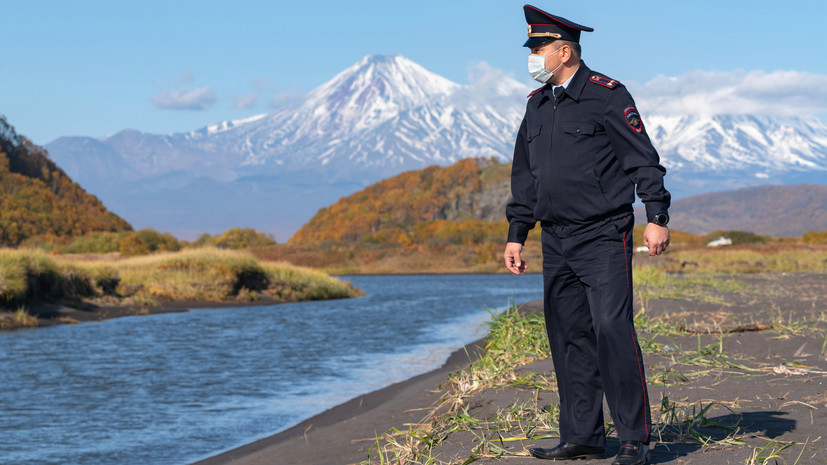The likelihood that the causes of the environmental disaster in Kamchatka are technogenic in nature is small, the Ministry of Natural Resources said.
According to the head of the department Dmitry Kobylkin, today, on October 5, soil and water analyzes have arrived in Moscow for a more detailed study by the Russian Academy of Sciences, as well as by any other bodies that deem this procedure necessary.
“All the analyzes that we took, all the analyzes that we recorded with Rosprirodnadzor, they tell us that there is no excess of MPC (maximum permissible concentrations of harmful substances. -
RT
) for oil products either in water or on land.
Most likely, it is not of a technogenic origin, ”said Kobylkin.
He added that insignificant excess "for iron and phosphates" was recorded, however, according to the minister, similar indications were noted earlier.
The head of the Ministry of Natural Resources expressed confidence in the analyzes carried out by Rosprirodnadzor.
At the same time, Kobylkin noted that his department, together with the Prosecutor General's Office, continues to inspect industrial enterprises in the region in order to finally exclude the version with an oil spill.
According to the minister, some RAS academics put forward a hypothesis about the natural cause of the disaster.
“After storms, there is an increase in the toxicity of microorganisms in this area, which leads to changes in oxygen, and because of this, these phenomena can occur.
This is recorded - it very often happens in the area of the Japanese islands, ”added Kobylkin.
At the same time, the head of the Ministry of Natural Resources said that the department does not consider what happened in Kamchatka a disaster, since there were no human casualties during these events.
“You asked what the scale of the catastrophe is - for us there is no scale of the catastrophe: not a single person died,” the minister said in an interview with reporters.
At the same time, Kobylkin recognized the need to form a monitoring system for seas and oceans in Russia.
“We, of course, lack a monitoring system ... There is no such full-fledged monitoring system for the oceans in the world ... We must go with monitoring systems to the seas and oceans.
Of course, it will be difficult to do, especially it will be difficult to do in the Arctic zone, ”the minister said.
Recall that earlier in the Kamchatka Territory - on the Khalaktyrsky beach, in Bolshaya and Malaya Lagerny bays and in Babya's bay - dozens of dead sea animals appeared.
At the same time, the surfers talked about the change in the color of the water and complained of a deterioration in their health.
Later, Deputy Prime Minister of Russia, Plenipotentiary of the President in the Far East Yuri Trutnev instructed to promptly eliminate the consequences of pollution.
The head of the Investigative Committee of the Russian Federation, Alexander Bastrykin, demanded to conduct an audit and "promptly give a legal assessment of the actions (inaction) of all persons possibly involved in the incident."
As it became known on October 5, the results of the check were transferred to the central office of the department.
The authorities of Kamchatka previously announced three possible causes of water pollution off the coast of the peninsula.
The Governor of the Territory Vladimir Solodov at that moment suggested that the first of them was a possible technogenic pollution.
“The version of technogenic pollution associated with human activities is being processed.
With spills of some toxic substances.
What exactly?
Now we have to find out if this version will be confirmed, ”he said.
In addition, he admitted that the situation could be caused by natural influences or phenomena.
"With the behavior, so to speak, of algae, which during the storm carried out to the coastline," the governor explained.
The head of the region called the third reason the seismic activity associated with "volcanic manifestations".
At the same time, the specialists of Kamchathydromet announced on the eve of the improvement of the ecological situation on the Khalaktyr beach of the peninsula.
“On October 4, we took samples again at Khalaktyrsky beach.
All indicators are within normal limits, the only excess of maximum permissible concentrations for phenols is better than it was on September 29.
The situation on the Khalaktyrsky beach is improving, "Interfax quotes the head of the Kamchatka Hydrometeorological Service Vera Polyakova.
According to her, no traces of petroleum products were found in the samples, and the excess for phenols is 1.4 MPC.

